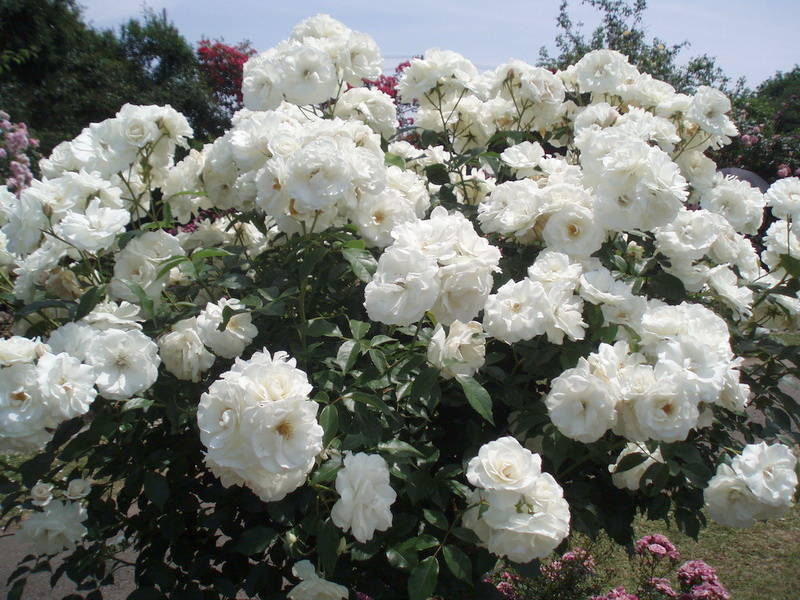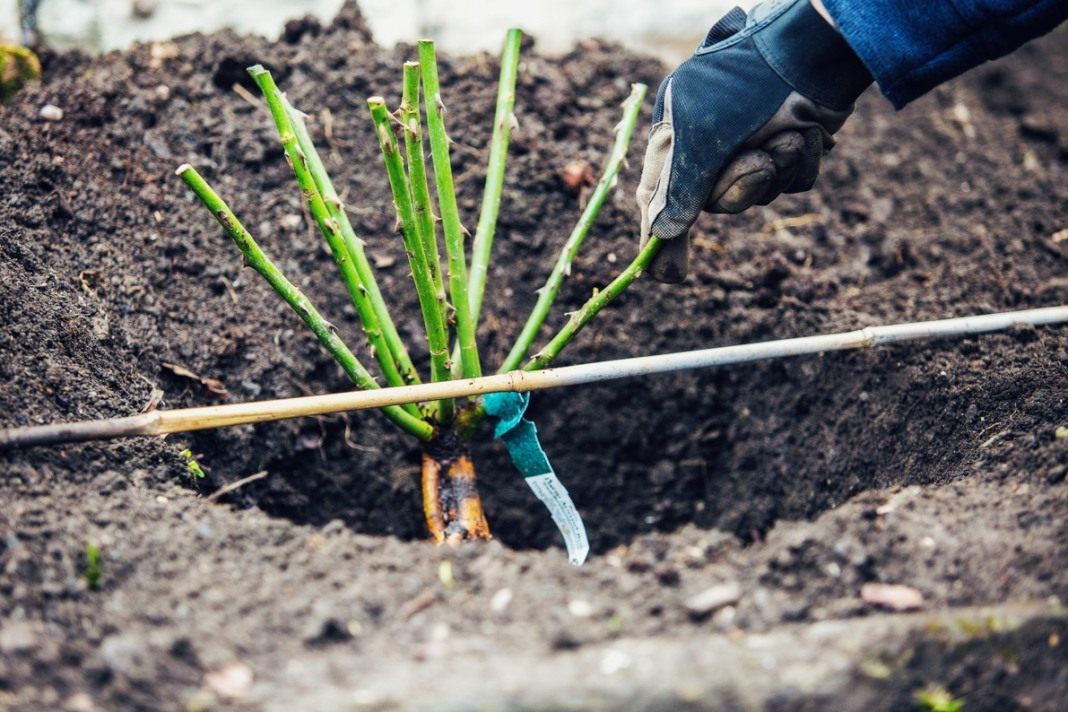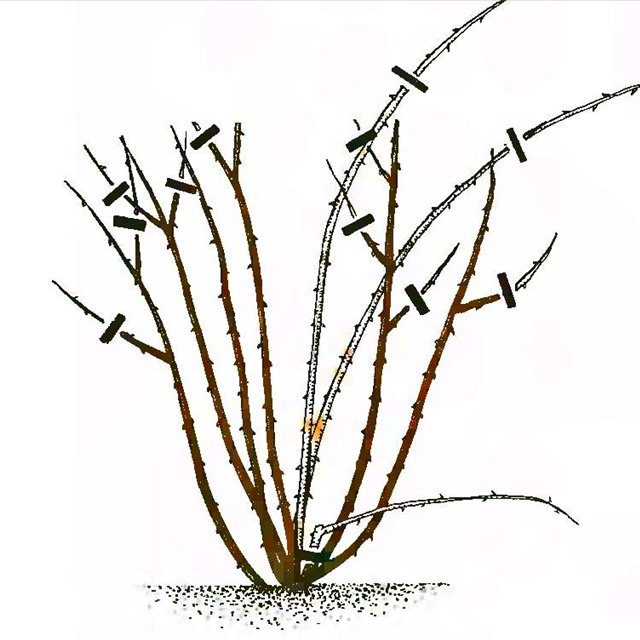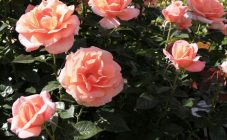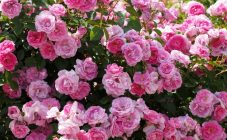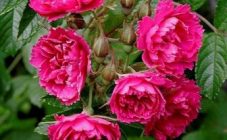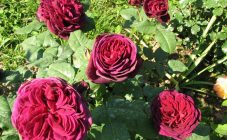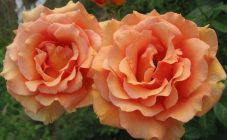Content:
Rose hybrid tea Iceberg can not leave anyone indifferent, and all thanks to the royal appearance and pleasant aroma that inflorescences exude. Domestic agronomists began to pay more and more attention to this variety of roses, they are not stopped even by the wayward and capricious nature of the plant. The topic of this article is Rose Iceberg, its description and cultivation features.
Rose Iceberg climbing: description and characteristics
The description of the climbing rose Climing Iceberg is best to start, of course, with flowers. They have a classic white or cream color, with a yellow core. The color of the inflorescences changes when the temperature outside drops, pink shades prevail on the petals. The surface is semi-double, the diameter of each flower can reach 9 cm, 2-3 flowers are formed on each stem.
The bush is medium in size, the height can vary from 1 to 1.5 meters, the shoots are painted in a light green tone. It blooms for a long time and almost continuously. The arrangement of the inflorescences is similar to folio varieties of roses. It is a prominent representative of the Climbing Climbing Roses subgroup. Every day this variety is gaining more and more popularity.
Brief characteristics of the plant:
| Inflorescence color | Cream, pearl white |
|---|---|
| Number of inflorescences on each shoot | 2-5 pcs. |
| Scent | Characteristic of flowers, desaturated |
| Average flower diameter | 7-9 cm |
| Plant height | Up to 1.5 m |
| Bush width | An adult plant can grow up to 1 m wide |
| Growing areas in Russia | Kuban, Krasnodar Territory and Rostov Region, as well as Moscow, Yaroslavl and Leningrad Regions, Ryazan, Saratov and Samara |
| Winter hardiness | Excellent |
| Powdery mildew resistant | Moderate |
| Resistant to black spot | Moderate |
| Rain resistant | Moderate |
| Flowering duration | Long |
| Landing dates | Spring and Autumn |
Planting and leaving
A polyanthus rose Iceberg will not please with flowering if you neglect the rules of planting and caring for it. Instead, the plant will "delight" the owner only with its modest presence.
It is important for a rose that there is sunlight, as well as light, nutritious and drained soil, moderate humidity and protection from gusts of wind.
The planting hole should be prepared in advance by digging the soil to a depth of at least 0.4 meters, with a diameter of about 65 cm. At the bottom of the hole, a soil mixture must be laid, which includes sand, rotted humus and sod earth. Also, the plant responds well to the introduction of a complex of mineral fertilizers and wood ash into the soil.
The clay soil is loosened using sand and humus, and the sandy soil is drained and compost is added.
Also, the amount of sunlight and the presence of drafts affect the quality of flowering. The duration of daylight hours must be at least 16 hours.
You can start planting soon after the onset of spring, when the soil warms up a little. The optimal time for planting is April. A few hours before planting, the seedlings should be immersed in water, a growth-stimulating solution can be used.This greatly facilitates the plant's adaptation and rooting in a new place. During planting, it is important to prune, remove excess shoots and roots, the length of which exceeds 30 cm.No more than 4 shoots, the strongest and healthiest, should remain on the bush.
Rose care
To grow beautiful roses, you must follow all the rules of agricultural technology. The peculiarity of the variety is that the root system of the bush must be equipped with a large number of small roots. Due to this, the absorption of liquid by the plant from the soil increases. The key to lush flowering is regular and moderate watering, as well as the introduction of complex mineral and organic fertilizers.
- Watering. It is necessary to water the plant strictly at the root; water should not fall on the crown. The regularity of watering depends on the weather conditions; the soil should not be allowed to dry out. Mature bushes do not need as much attention as young ones.
- Fertilization. Organic fertilizers should be applied like mulch. The plant responds well to the introduction of ventilated peat, rotted humus and compost into the soil. In the fall, it is imperative to update the mulch, this will not only enrich the chemical composition of the soil, but also protect the plant from death in frost. At the beginning of summer, a complex of mineral fertilizers or ammonium nitrate is applied (during budding and during flowering). Using folk recipes, you can apply nettle infusion.
- Pruning. Pruning must be done in spring and autumn. If the plant was cut in the fall, then in the spring the procedure is not repeated; if necessary, the damaged shoots are cut off. When pruning, you should gradually remove shoots older than three years. Last year's increments should be shortened by 2-3 buds.
- In humid climates, the plant is exposed to the development of fungal diseases, so it is important to regularly carry out preventive irrigation using insecticidal or fungicidal solutions.
Advantages and disadvantages
Rose floribunda Iceberg is famous for its many advantageous features. The main ones are:
- Lush and long flowering. It can be used to decorate various elements, for example, arches, single plantings or fences, walls.
- Possibility of re-flowering. If fading inflorescences are removed in a timely and regular manner, with the arrival of spring, it will be possible to contemplate the attractive flowers again.
- Unusual flower structure, as well as an interesting color of the petals. The leaves have a light green glossy color, the flowers are cup-shaped, semi-double.
- During flowering, a pleasant but weak aroma is exuded.
- Rapid growth. For a short period of time, it is able to hide unsightly fragments.
- The variety is frost-resistant.
- Medium disease resistance. When grown in hot and dry climates, the plant is not affected.
Unfortunately, there are also disadvantages. Let's consider them in more detail:
- A powerful and spreading bush grows, which requires the construction of a solid support.
- When grown in humid climates, the plant is affected by black spot.
- Flowers are not intended for cutting, they perform exclusively their decorative functions entirely with the bush.
Climbing rose Iceberg Climbing is a unique varietal variety that combines not only royal decorative qualities, but also relative unpretentiousness in comparison with its relatives. Even a novice florist can grow it, it is enough just to first familiarize yourself with the agrotechnical rules.
